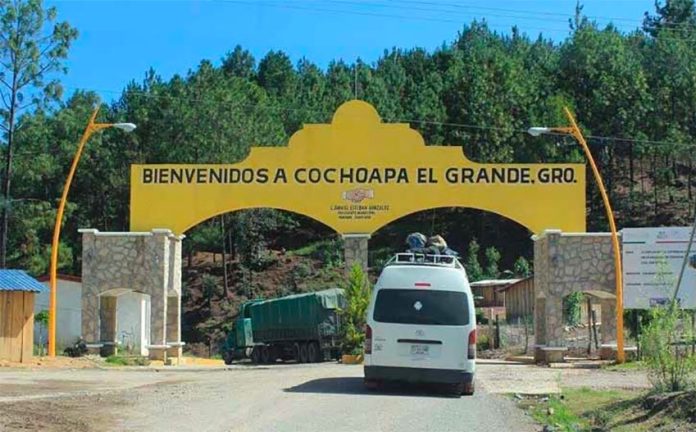If there’s one thing I’ve learned from deportees, it’s that deportation is the easy bit.
Being handcuffed and forcibly returned to Mexico, be it through a border door or a plane deeper into the country, is bearable. Few are treated with respect and many are treated inhumanely, but over the years I’ve spent covering the plight of returning migrants, the vast majority have the same attitude: “Fair enough, you got caught. What else did you expect?”
Take David, whom I met in Guadalajara earlier this month. He’s from Cochoapa El Grande, in Guerrero state, the most impoverished municipality in Mexico. I’ve been there too.
It’s a mountain town, a two-hour drive up into the pine-jungled hills above Tlapa. Half an hour up the route, the asphalt comes to an end and the bright orange dirt road, cut at a right angle out of the hillside and furrowed by the streams of these sierras’ constant drizzle, takes you to the arches at the entrance to the town.
It looks much like any other town in this area. Adobe walls where the rock plaster has been chipped away, exposing the large rounded slabs. The colorful bubble-lettered graffiti promoting the visit of a music band two months ago. The town square, lined with topiarized square bushes and the see-through glass box containing jicama, chile powder and wasps.
Below the town there’s an enormous social housing development. One hundred identical houses built by a federal government stand in eight identical lines. The houses are deserted. Their windows smashed. You can see children running in between them.
It’s not because they’re bad. It’s because the town itself is underpopulated. Anyone with half a chance in life leaves. What good’s a roof over your head if there’s no work outside your door?
Cochoapa El Grande is impoverished for a reason: it’s two hours up a dirt road from Tlapa. There’s agricultural work, but profits are eaten up just getting the product to the commercial center. A bad road moves produce slowly, eats up more diesel, and damages the peaches (the main crop) along the way.
“Wouldn’t the housing money have been better spent on putting a proper road in?” I ask a local.
“Different ministries,” he shrugged.
Cochoapa El Grande is struggling even more. Like much of Guerrero, clandestine opium poppy production has for a long time been a major source of income. The opium fields produce at least two harvests a year: the wet season and the dry season.
The dry season opium is the best. It’s thicker, more concentrated, and when I first covered the industry four years ago, sold for US $1,500 a kilo.
But Fentanyl – synthesized opium – a hundred times stronger and far easier to produce, has ripped the bottom out of the market.
David, our deportee in Guadalajara, knows all about that. “A kilo of dry season gum is at $250 now,” he told me.
“There’s no other way to make money, so I had to try to cross the border.”
He went to Tijuana, hired a coyote guide, and crossed into Arizona. He got in. It was only at a Tucson McDonald’s that he got unlucky. A cop stood beside him in the line and watched his unusually ravenous hunger with suspicion when his quarter-pounder arrived.
He was sent to Guadalajara for that reason. To get him a thousand kilometers from the border makes it harder to get back. But don’t think that puts him off.
“I’ve already left my village,” he said. “I can’t show my face there again. People are depending on me.”
He would rest a day or two in Jalisco, before taking off again.
Back to Tijuana.
Back to the border.
“I know I can get in, because other people have done it,” he said, relaxing into the anonymous interview. “For me it’s either death in the desert, or life in the United States.”
Fair enough, he’s got half a chance. What else did you expect?
Alasdair Baverstock is a freelance foreign correspondent and reporter for CGTN who has covered Mexico and Latin America for nearly a decade. You can follow him across social media at @alibaverstock.
